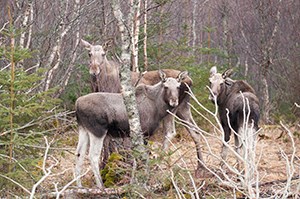Towards integrated management of wildlife, landscape and people

How should the impact of moose to economically and ecologically important tree species be managed? This is a hot topic in Fennoscandia.
How does the study design affect conclusions about the impact of moose browsing damage on young trees of Scots pine, aspen, rowan, sallow, and oak? Across 10 landscapes in Sweden, Norway, Finland, Latvia, Belarus and Russia we found a strong effect of moose on damage to both economically and ecologically valuable tree species. Looking at studies in Sweden only, there were high moose densities across all landscapes studied, and high overall rates of browsing damage. Therefore, a weak relationship was found between moose density and browsing damage. Adding a comparison to urban forest areas, which are less accessible to moose, showed a clear effect of moose density on tree damage of both deciduous trees and Scots pine. This provides opportunity for restoring deciduous forest as a green infrastructure in urban landscapes.
One outcome is that research design affects the conclusions about the role of moose density on browsing damage on economically and ecologically valuable tree species. Management of moose, their predators including man, and forestry and biodiversity conservation, needs be integrated.
Download this, and other issues of, Forest Facts.
More issues of Forest Facts and the main version in Swedish, Fakta Skog, may be downloaded for free from the SLU website following this link: